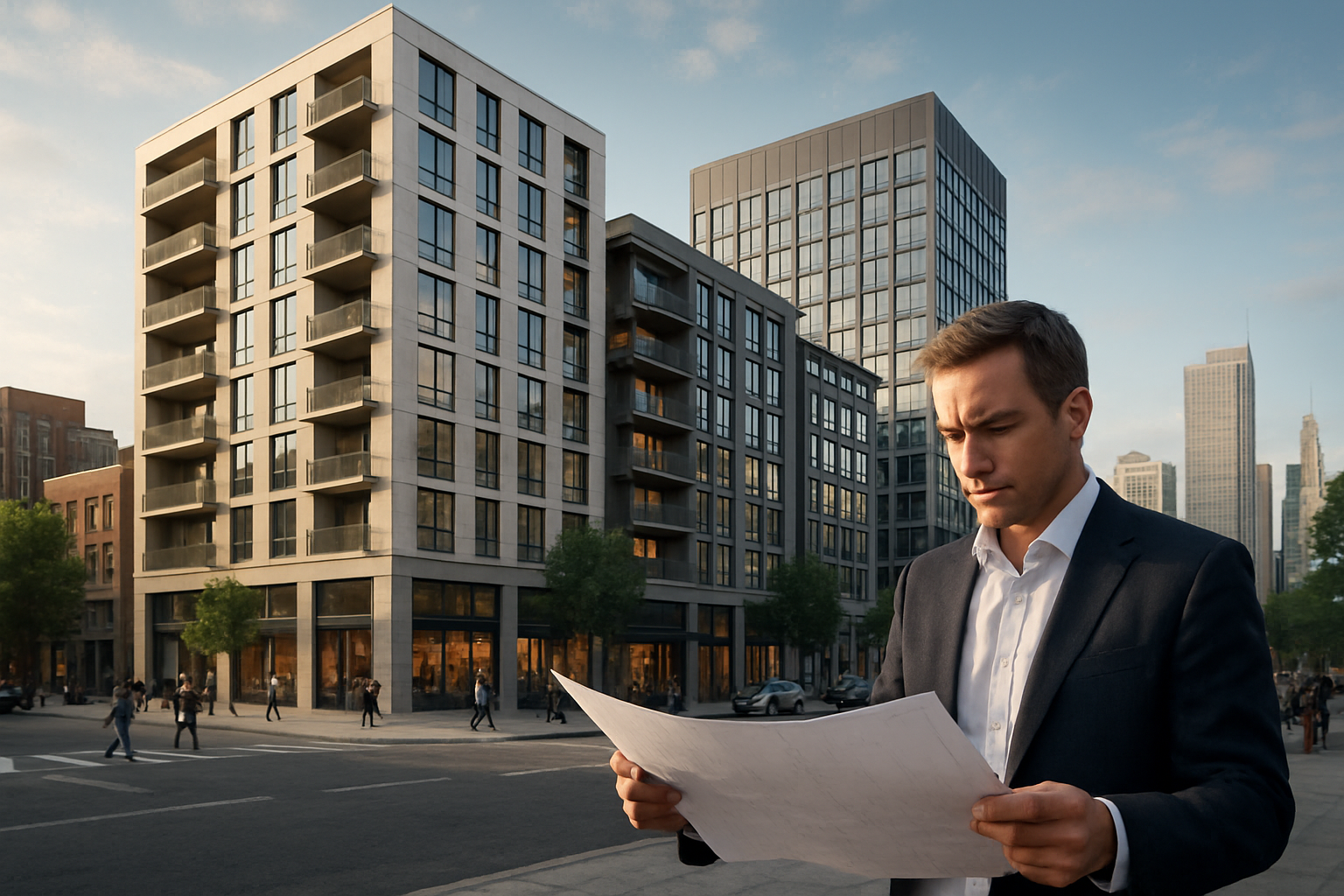Title: Resurgence of Mixed-Use Developments in Urban Planning
The real estate landscape is witnessing a significant shift as mixed-use developments make a comeback in urban centers. This trend, blending residential, commercial, and sometimes industrial spaces within a single project, is reshaping city skylines and redefining community living. With a projected growth rate of 9.3% annually until 2027, mixed-use developments are becoming a focal point for investors, developers, and urban planners alike. Let's delve into the factors driving this resurgence and its implications for the future of real estate.

The Modern Revival
The current revival of mixed-use developments can be traced back to the 1960s and 1970s when urban planners began recognizing the drawbacks of strict zoning. Jane Jacobs, a prominent urbanist, advocated for diverse, mixed-use neighborhoods to create vibrant, safe, and economically thriving communities. This idea gained traction slowly but has accelerated in recent years due to changing demographics, environmental concerns, and economic factors.
Economic Advantages of Mixed-Use Projects
Mixed-use developments offer significant economic benefits for both developers and communities. For developers, these projects provide diversified income streams, reducing risk and potentially increasing returns. A study by the Urban Land Institute found that mixed-use properties often command higher rents and have lower vacancy rates compared to single-use buildings.
For communities, mixed-use developments can lead to increased tax revenue, job creation, and economic revitalization. They often serve as catalysts for further development in surrounding areas, creating a ripple effect of economic growth.
Sustainability and Environmental Impact
One of the key drivers behind the resurgence of mixed-use developments is their potential for sustainability. By combining residential, commercial, and sometimes industrial spaces, these projects reduce the need for transportation, leading to lower carbon emissions. A report by the Environmental Protection Agency suggests that mixed-use developments can reduce vehicle miles traveled by up to 30% compared to traditional suburban developments.
Moreover, these projects often incorporate green building practices, such as energy-efficient designs, renewable energy systems, and water conservation measures. This not only reduces the environmental impact but also appeals to environmentally conscious tenants and buyers.
Changing Demographics and Lifestyle Preferences
The resurgence of mixed-use developments aligns closely with changing demographic trends and lifestyle preferences. Millennials and Gen Z, who make up a significant portion of the housing market, often prefer walkable neighborhoods with easy access to amenities. A survey by the National Association of Realtors found that 62% of millennials prefer living in mixed-use communities.
Additionally, the rise of remote work has increased demand for live-work-play environments. Mixed-use developments cater to this need by providing residential spaces with integrated office areas and nearby recreational facilities.
Challenges and Considerations
While mixed-use developments offer numerous benefits, they also present unique challenges. Financing can be more complex due to the varied income streams and potential risks associated with different property types. Zoning regulations in some areas may still pose obstacles, requiring developers to navigate complex approval processes.
Managing mixed-use properties also requires a different skill set compared to single-use buildings. Property managers must balance the needs of diverse tenants, from residents to retail businesses and office workers.
Future Outlook and Innovations
As mixed-use developments continue to gain popularity, we can expect to see innovations in design and functionality. Smart city technologies are likely to be integrated more frequently, enhancing efficiency and user experience. For instance, IoT sensors could optimize energy use across different sections of the development, while AI-powered systems could manage shared spaces more effectively.
Vertical mixed-use developments, which stack different uses within a single high-rise building, are gaining traction in dense urban areas. These projects maximize land use and create self-contained mini-communities within a single structure.
Impact on Real Estate Investment Strategies
For real estate investors, the rise of mixed-use developments presents both opportunities and challenges. These projects often require larger capital investments but can offer higher returns and greater stability due to their diversified nature. Investors need to develop new valuation models and risk assessment strategies to accurately evaluate these complex properties.
REITs specializing in mixed-use developments are emerging, providing a way for smaller investors to gain exposure to this trend. As of 2023, several mixed-use focused REITs have outperformed traditional single-use property REITs, indicating growing investor confidence in this sector.
Conclusion
The resurgence of mixed-use developments represents a significant shift in urban planning and real estate development. Driven by economic, environmental, and social factors, this trend is reshaping our cities and redefining community living. As we move forward, mixed-use projects are likely to play an increasingly important role in addressing urban challenges, from housing shortages to sustainability concerns.
For real estate professionals, investors, and urban planners, understanding and adapting to this trend will be crucial. The future of real estate lies in creating integrated, sustainable, and vibrant communities that cater to the evolving needs of modern society. Mixed-use developments are at the forefront of this transformation, promising to redefine the urban landscape for generations to come.





